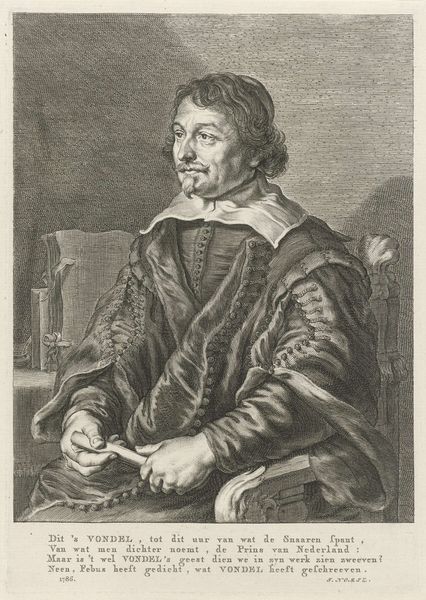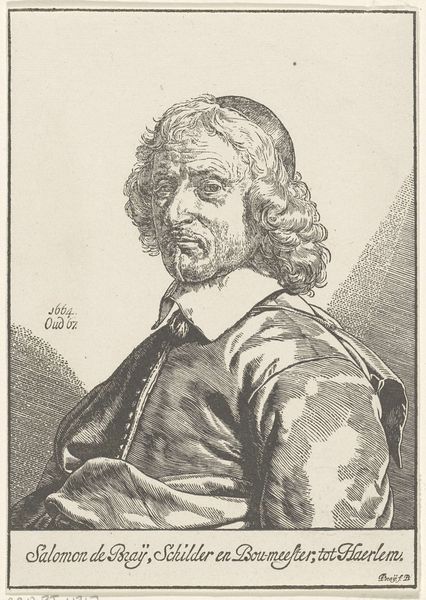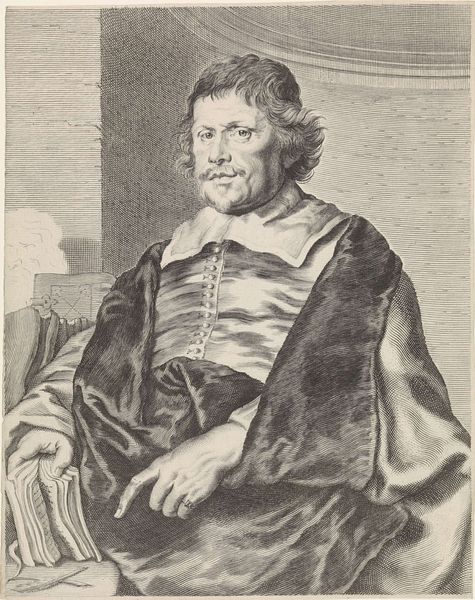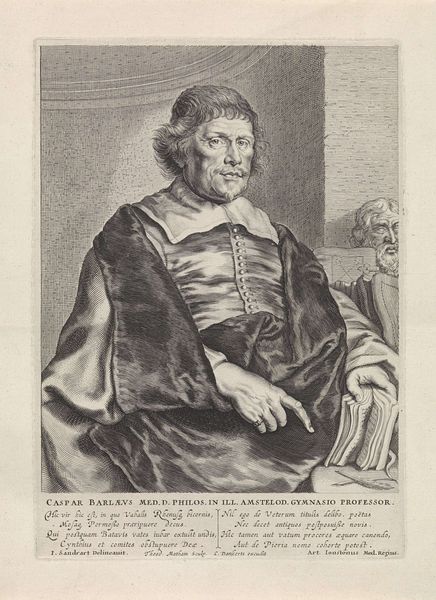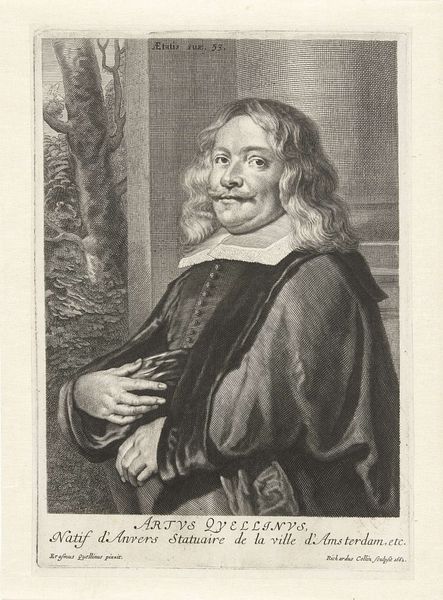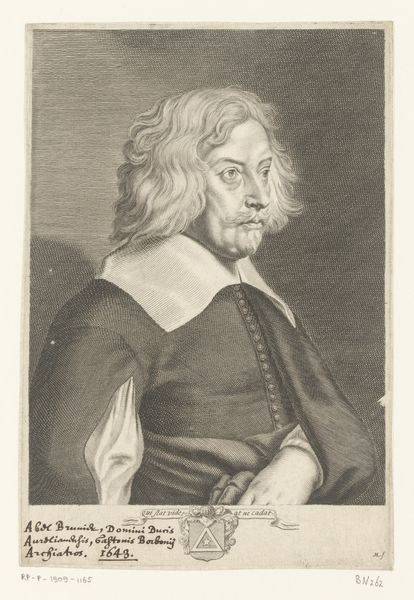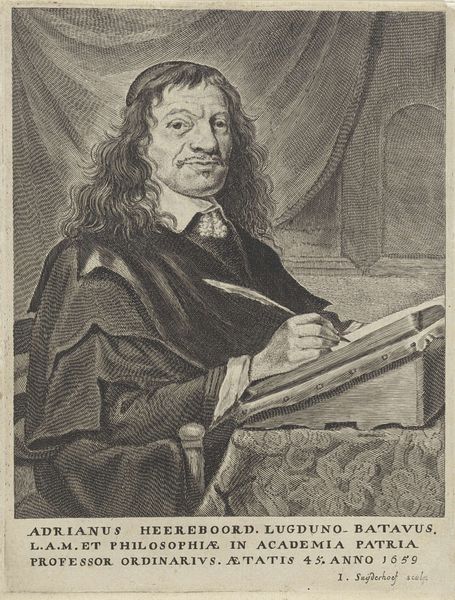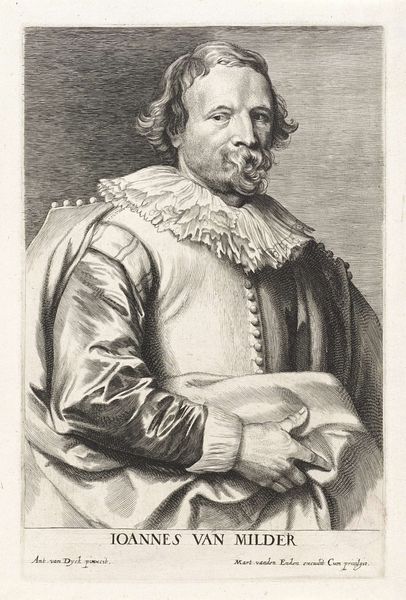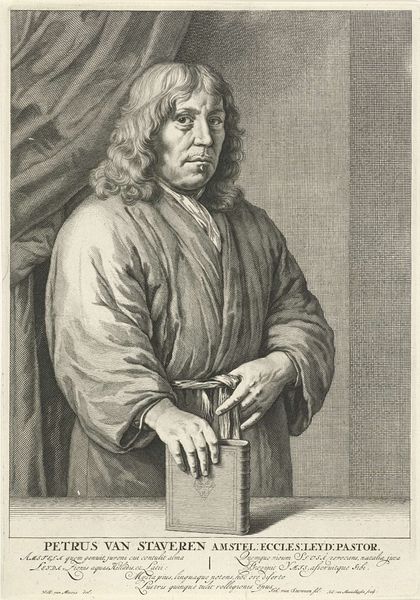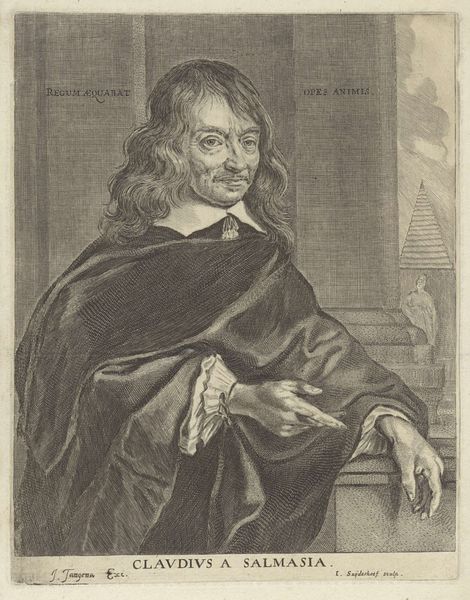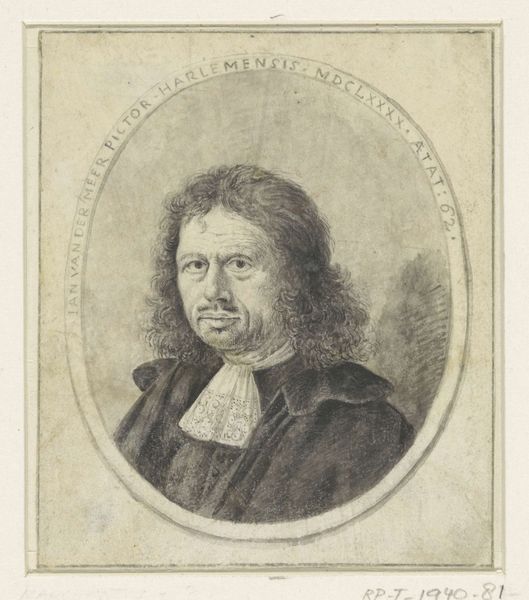
drawing, pencil
#
portrait
#
pencil drawn
#
drawing
#
dutch-golden-age
#
pencil sketch
#
charcoal drawing
#
portrait reference
#
pencil drawing
#
pencil
#
portrait drawing
#
realism
Dimensions: height 238 mm, width 193 mm
Copyright: Rijks Museum: Open Domain
Editor: Here we have Joachim von Sandrart's "Portret van Caspar Barlaeus," created between 1637 and 1643. It's a pencil drawing, quite a departure from the oil paintings of the Dutch Golden Age. The figure looks somewhat… stern? How do you interpret this work? Curator: Stern is one word! Perhaps ‘thoughtful’ is another. To me, this drawing whispers of Sandrart's profound observation of human nature, rather than merely rendering Barlaeus’ likeness. The very medium, pencil on paper, offers a certain immediacy and vulnerability that is often lost in the grand oil portraits of the time. Do you see how the rapid strokes suggest a dynamic, intellectual energy? It's like catching a fleeting moment of genius in repose. Editor: I do see that now! The lines around his eyes and mouth especially. It does feel less posed, more candid, than other portraits I’ve seen. What about the other figure sketched in the background? Curator: Ah, a phantom presence, isn't it? It suggests the bustling, often unseen, intellectual milieu in which Barlaeus moved. A conversation partner, a student perhaps, always present, feeding the flames of his intellect. Perhaps even a glimpse into Sandrart's creative process itself. He’s reminding us that ideas don’t spring from a void, but from dialogue. Editor: So, it’s not just a portrait of an individual, but also of an intellectual environment? I hadn’t considered that. Curator: Precisely! And isn’t that the essence of true portraiture – to capture more than just the external? Editor: Absolutely. It's like Sandrart is drawing the mind, not just the man. Curator: Yes, it sets a different level. We’ve gone beneath the surface to the spirit within!
Comments
No comments
Be the first to comment and join the conversation on the ultimate creative platform.
